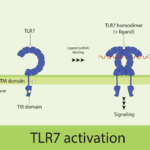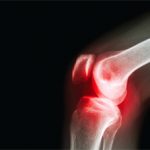The study found that, in the period of 30 days after a new diagnosis of gout, patients are at about a 1.7-fold increased risk of cardiovascular events, which included fatal and nonfatal myocardial infarction, ischemic or hemorrhagic stroke and transient ischemic attack, compared with their baseline risk before gout diagnosis.3
Dr. Pillinger agreed with the study authors that these findings support the need for cardiovascular risk management as early as the time of first gout consultation, particularly in the first 30 days after diagnosis.
Osteoarthritis
Dr. Pillinger went on to discuss osteoarthritis (OA), the most common form of arthritis and the one that is still lacking in disease-modifying treatments. Although a study by Laslett et al. found that krill oil did not show any benefit for patients with knee OA, a study evaluating methotrexate was more promising.4
In this study by Kingsbury et al., mor than 200 patients with symptomatic, radiographic knee OA were randomized to receive either oral weekly methotrexate—with a six-week escalation of 10 to 25 mg—or matched placebo over 12 months along with continued usual analgesia. At six months, a statistically significant reduction in pain, stiffness and function was seen, though Dr. Pillinger noted that the total reduction was modest for each measure.5
In a separate study looking at once-weekly semaglutide, a GLP-1 receptor agonist, in patients with obesity (BMI ≥30) and knee OA with moderate to severe pain, Bliddal et al. found the mean change in the Western Ontario and McMaster Universities Osteoarthritis Index (WOMAC) pain score was statistically significant at 68 weeks (-41.7 points with semaglutide compared with -27.5 points with placebo).6 No biomarkers were collected during the study, so Dr. Pillinger explained that we do not know if pain reduction was related to weight loss or if other mechanisms contributed to improvement. However, in either case, semaglutide may be an option to help knee OA in patients also suffering from obesity.
Dr. Pillinger proceeded to discuss additional work on lupus, myositis, systemic sclerosis, vasculitis and Sjogren’s disease.
Advancements in Basic Science
The second half of the session, led by S. Louis Bridges Jr., MD, PhD, Franchellie M. Caldwell Professor of Medicine, physician-in-chief and chair, Department of Medicine, Hospital for Special Surgery, New York, focused on basic science advancements.
Picking up on the topic of OA, Dr. Bridges noted that Nav1.7 voltage gated sodium ion channels are encoded by the gene SCN9A. In a study from Fu et al., human OA chondrocytes were found to express functional Nav1.7 channels, which appear to regulate secretion of molecules, such as HSP70 and midkine, that help to maintain cartilage integrity. In mouse models of OA, blocking Nav1.7 in chondrocyctes lessened progression of structural joint damage, indicating that Nav1.7 may be a potential target for future disease-modifying OA therapies and non-opioid pain relief medications for OA.7

